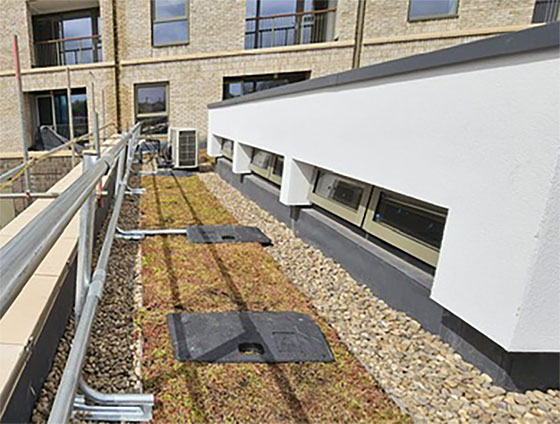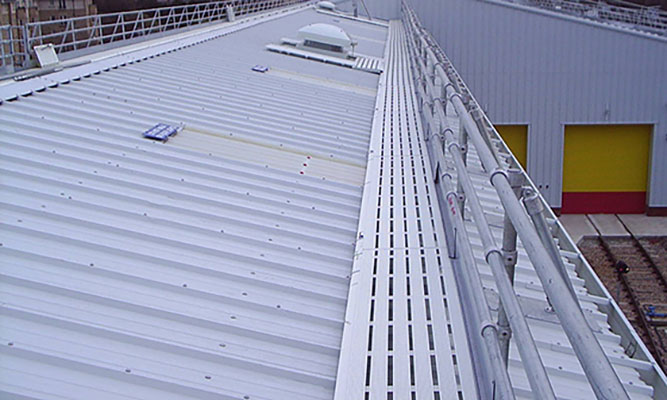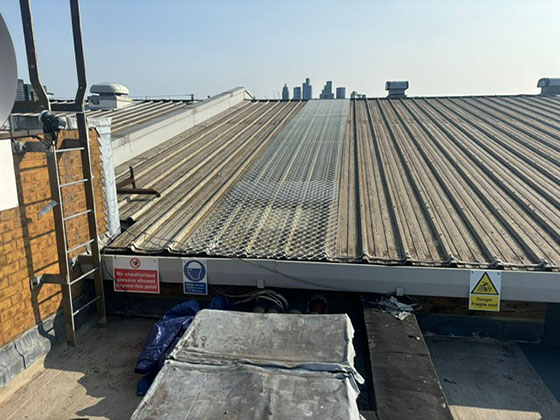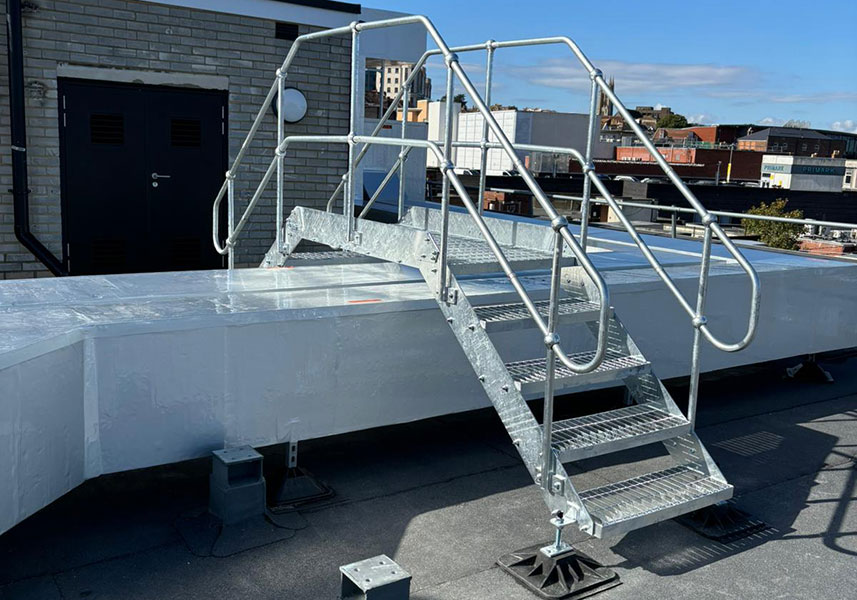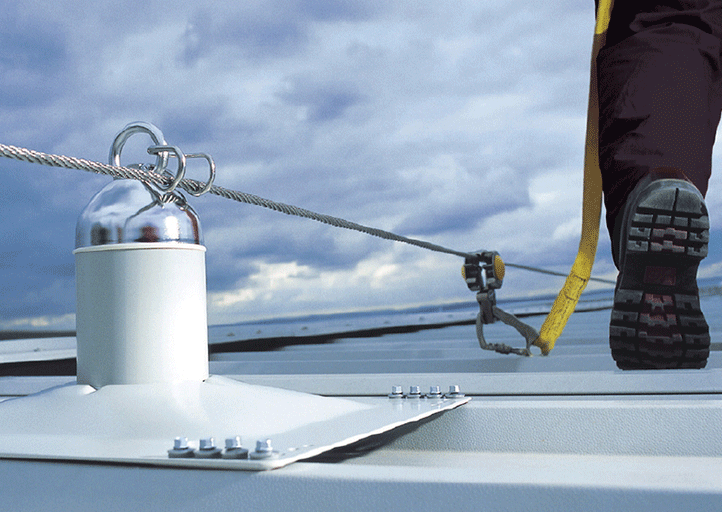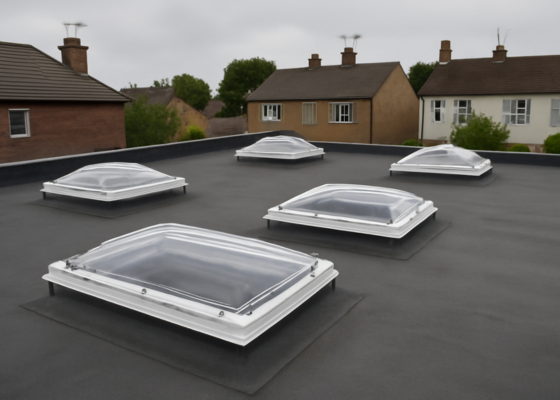Building design has come a long way from the flat concrete roofs of the past. Today’s rooftops are multifunctional spaces, supporting a range of uses from solar panels to biodiversity. But while these may look good and benefit the environment, they can be a roof safety nightmare, especially for anyone working at height.
It doesn’t matter if you’re managing a commercial office, school, healthcare facility, or apartment block. You need to understand how these different roofing trends can create hidden risks.
Safety on green roofs
Green roofs are increasingly popular. Benefits include greater insulation, stormwater management capabilities, improved air quality, and enhanced urban biodiversity. But while they may look good, it’s important to understand that they also need regular maintenance, including irrigation system repair and plant care, which bring a whole new set of hazards to navigate.
Drainage outlets, changes in roof level, or pipework may be concealed by plant growth, making it tricky to identify a fall or trip risk. Wet soil, algae buildup on walkways, uneven surfaces, and delicate vegetation can also make it difficult for workers to safely navigate the roof, especially when carrying tools and materials.
Solutions
Installing clearly marked walkways, freestanding guardrails, or fall restraint systems helps guide users safely across the roof while preventing access to dangerous areas. Importantly, these systems can be installed without damaging the waterproof membrane or disturbing planting.
Protecting workers on slippery surfaces
Modern rooftops often use smooth materials, such as single-ply membranes, aluminium finishes, or coated steel. But these can become slippery when wet. Solar panels, in particular, can contribute to water runoff across working areas.
Slips are one of the most common causes of injury during rooftop work and can be just as dangerous as a fall if they happen near an edge or opening.
Solutions
Anti-slip walkways keep workers safe in areas where slipping can occur. These walkways can be used with edge protection or lifeline systems. This combination helps ensure that workers can walk or work safely near fall hazards.
The hidden dangers of fragile roofing materials
Fragile and lightweight roofing materials continue to present the greatest risk to people working at height. For untrained workers, such as those carrying out short-term maintenance or cleaning tasks, these roofs and surfaces can appear sturdy. But the reality is, they’re unlikely to support the weight of a worker and the materials they’re carrying.
Fragile roofs and materials can include rooflights, fibre cement sheets, glass (including wired glass) and decorative cladding systems.
The risk is compounded when these elements are weathered, poorly maintained, or obscured by dirt or plant growth. Even experienced workers may misjudge the surface’s strength and step somewhere unsafe.
Solution
A full roof survey is essential to identify and label fragile areas. Fall protection might include walkway systems to guide foot traffic away from risk areas, fall arrest systems with fixed anchor points if access is unavoidable. Fall protection covers can also be fitted over fragile rooflights and skylights. Warning signs and barriers should always be used where fragile materials are present.
Rooftop equipment and obstructions
As rooftop spaces are used more efficiently, we’re seeing an increase in equipment like HVAC units, solar inverters, vents and skylights, all of which require regular inspection and maintenance. These obstructions create tight spaces, awkward paths and visibility issues that can catch out even experienced contractors and maintenance engineers.
Solutions
Strategic planning of safe access routes using modular walkway systems can ensure workers don’t have to step over obstacles or work too close to unprotected edges. Alternatively, step over units can provide safe access over obstacles such as pipework or cable trays. If regular access is needed, collective edge protection or permanent lifeline systems should be considered.
Adapting to modern roof safety
As buildings change, their safety systems need to change too. A fall protection solution that worked ten years ago might not be enough now if the roof has new equipment or solar panels. It is important to review the fall protection based on how the roof is being used.
We work with architects, contractors and building managers to design fall protection systems that evolve with your building. Our rooftop surveys identify the specific risks posed by modern materials and layouts so you can stay compliant and keep everyone safe.
Need help assessing your rooftop risks? Get in touch to book your fall protection survey today.

